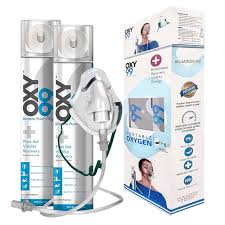Portable Oxygen Cylinder for Travel: Breathe Easy Wherever You Go
Introduction
Traveling with respiratory conditions can be challenging, but with a portable oxygen cylinder for travel, you can explore the world with peace of mind. Whether you’re flying, driving, or cruising, having a lightweight and reliable oxygen source ensures safety, comfort, and freedom.
In this guide, we cover everything you need to know about portable oxygen cylinders for travel — from benefits and types to top tips and FAQs.
A portable oxygen cylinder: what is it?
A portable oxygen cylinder is a small, light device used to store medical-grade compressed oxygen. It is intended to assist people with respiratory conditions in maintaining their oxygen levels while they are moving around.
These cylinders are available in various diameters and are frequently utilized by those who have:
Chronic Obstructive Pulmonary Disorder, or COPD
Having asthma
Fibrosis of the lungs
Sleep apnea (sometimes)
Additional heart or lung disorders
Why Choose a Portable Oxygen Cylinder for Travel?
Here are the top reasons to invest in a portable oxygen cylinder when traveling:
-
Mobility: Small and lightweight for easy carrying.
-
Convenience: Fits in vehicles, airplane cabins, or backpacks.
-
Safety: Ensures a steady oxygen supply during long trips.
-
Freedom: Enables users to enjoy vacations, business trips, or everyday errands.
Top Travel-Friendly Portable Oxygen Cylinders (2025)
Here are a few highly regarded models:
The SimplyGo Mini from Philips Respironics is lightweight, FAA-approved, and has a long battery life.
Reliable, portable, and long-lasting pulse-dose oxygen delivery is offered by Invacare Platinum Mobile.
OxyGo Fit: A small design that’s ideal for regular travelers.
Excellent for short excursions and road journeys, the D-type oxygen cylinder comes with a trolley.
Boost oxygen canisters—not for medical use—are perfect for sports or high-altitude trips.
Pro Tip: Prior to purchasing a portable oxygen cylinder for travel, always get medical advice.
Air Travel With Oxygen: What You Should Know
-
Contact the airline at least 48–72 hours before departure.
-
Submit a medical certificate or prescription.
-
Use only FAA-approved devices during flights.
-
Carry extra batteries or oxygen refills, especially for long-haul journeys.
Tips for Traveling With Portable Oxygen
-
Pack smart – Include your cylinder, extra tubing, cannulas, and power supplies.
-
Sanitize – Keep your equipment clean to avoid infections.
-
Charge ahead – Fully charge devices or carry spare batteries.
-
Document everything – Bring prescriptions and medical records.
-
Inform your carrier – Whether it’s an airline, cruise, or hotel.
Frequently Asked Questions (FAQs)
Q1: Can I fly with a portable oxygen cylinder?
A: Yes, but you must use an FAA-approved oxygen device. Always check with your airline in advance.
Q2: How long do portable oxygen cylinders last?
A: It depends on the cylinder size and oxygen flow setting — ranges from 2 to 12+ hours.
Q3: Are portable oxygen cylinders safe?
A: Absolutely. When handled properly, they are safe and essential for many travelers with respiratory conditions.
Q4: Can I rent one instead of buying?
A: Yes, many suppliers offer rental services for short-term travel needs.
-
Key Features to Look For
When choosing a portable oxygen cylinder for travel, consider these important features:
Feature Description Size & Weight Opt for a cylinder that’s easy to carry or fits in a travel bag. Oxygen Capacity Choose based on your prescribed flow rate and travel duration. Refillable vs Disposable Refillable cylinders are more eco-friendly; disposable ones are ideal for short trips. Oxygen Flow Type Continuous flow or pulse-dose delivery based on your doctor’s recommendation. FAA Approval If flying, ensure it’s FAA-approved for air travel.
